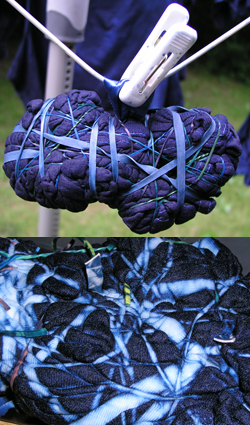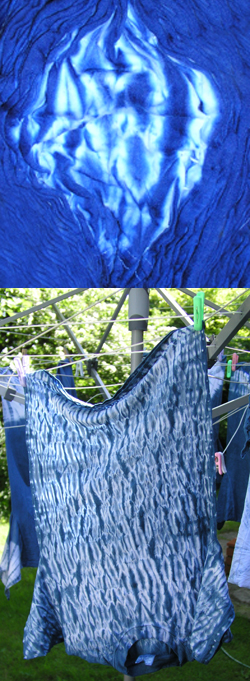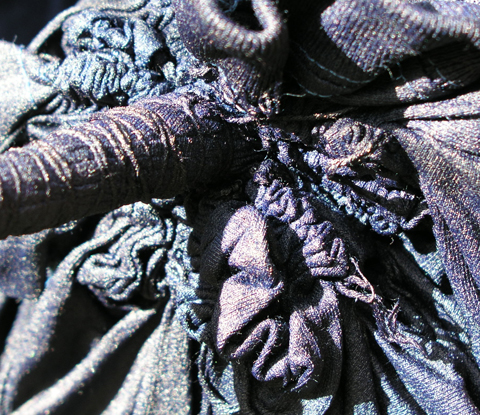ShiboriA Brief DefinitionShibori is a Japanese term. Shibori comes from the verb root “shiboru” -
to wring squeeze or press, and would be used to describe wringing out
the washing or a floor cloth. Tie-dye is the popular name for shibori in the Western world. However this term does not fully describe the great diversity of techniques which have been developed or the degree of skill and knowledge required to execute them. Yoshiko Wada defines shibori as “ The Inventive Art of Japanese Shaped Resist Dyeing”, this is indeed the title of her first book on shibori. In her new book “Memory On Cloth - Shibori Now” Wada defines
shibori as any process which leaves a memory or permanent record
Taking a 2D piece of fabric and manipulating it into 3D form through various combinations of the following:-
Shibori is often used in conjunction with indigo dye because of the individual properties and behaviour of this dye.
Shibori can be used in conjunction with a variety of other processes which are applied to textiles:-
Many cultures have their own shaped resist techniques with their own specific terms. Shibori has become recognised as the umbrella term for all such shaped resist techniques.
|
 |
 |
|
 |
|